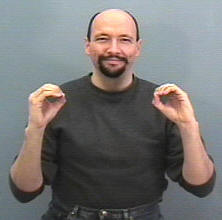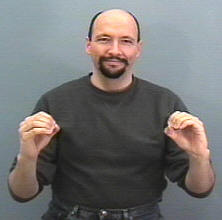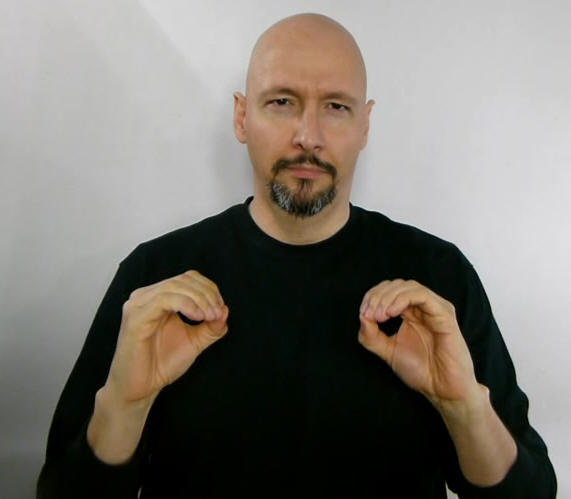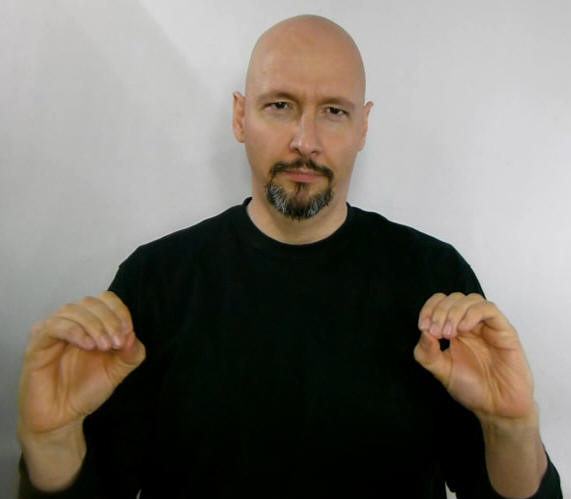American Sign Language: "none"
NONE:
Form "O" hands and hold them out in front of you palms facing mostly toward each other and a little bit forward. Then quickly move your hands forward and shake your head "no" once. This sign can also be done with one hand.As I'm doing it here, the sign is almost identical to a casual version of TEACH.
Here is another example of me signing "none."
Note that the hands move forward and a bit toward the outside.
Also see: "NOTHING" On that page, check out the signs "hear-nothing" and "know-nothing."
Notes:
Question: What is the difference between the sign for TEACH and the sign for NONE?
Answer: The sign TEACH is typically done somewhat higher than the sign for NONE. However, the "casual" version of the sign for TEACH is done much lower and could thus indeed look like the sign for NONE.
One of the ways to help differentiate signs that overlap is to consider the things that each sign can do that the other can't or typically doesn't.
Ask yourself, "What can this sign do that the other sign can't?"
While the sign NONE is sometimes moved directly forward, it can (and often does) move in such a way that each hand moves at forward and to the side angle. The sign TEACH cannot do that. The movement path of the sign TEACH is forward with no sideward movement or angle.
Thus we have an example of "differentiation" based on the range of potential movement paths. Other examples can include the acceptable range in height of production. Teach can be done as high as the forehead and still be considered "in range" for a non-emphasized version of the sign. NONE can typically be done (and is often done) lower than TEACH.
TEACH can indicate the subject and object (via direction & starting / ending locations). NONE doesn't have that ability -- however it can be done closer to that which there is "none" of. For example "HEAR NONE" starts the sign NONE much closer to the EAR than the standalone sign NONE. The sign NONE can be placed on the forehead to indicate "no knowledge."
Another differentiation is that NONE can be done with one hand and be considered a "standard" variation. The sign TEACH typically is only done with one hand under extenuating circumstances (such as carrying something in one of your hands).
The sign TEACH has a wider range of potential handshapes. While TEACH typically consists of "flattened-O" shapes the shape of TEACH seems to vary in actual usage much more than the standard rounded "O's" used in the sign NONE.
Want to help support
ASL University? It's easy:
DONATE (Thanks!)
(You don't need a PayPal account. Just look for the credit card
logos and click continue.)
Another way to help is to buy something from the ASLU "Bookstore."
Want even more ASL resources? Visit the "ASL Training Center!" (Subscription
Extension of ASLU)
CHECK IT OUT >
Bandwidth slow? Check out "ASLUniversity.com" (a
free mirror of
Lifeprint.com less traffic, fast access)
VISIT >




